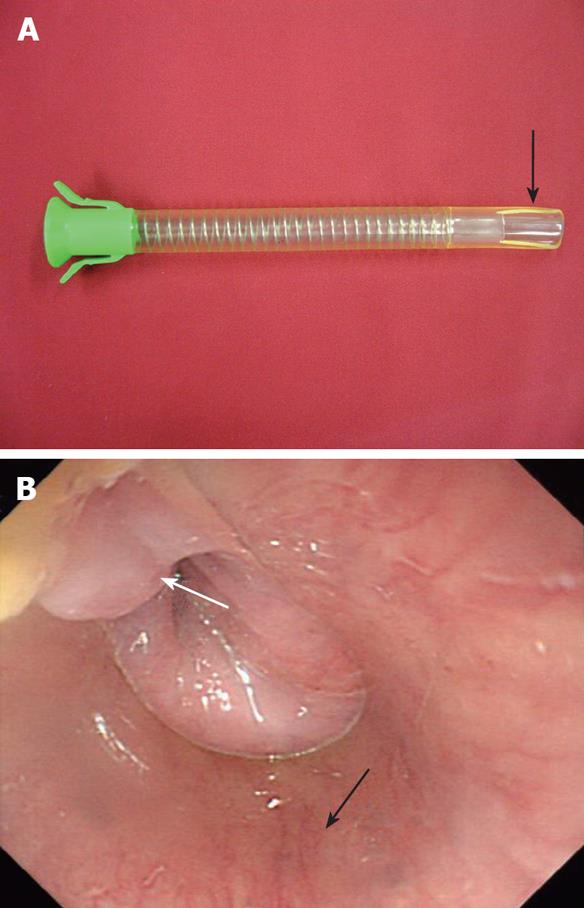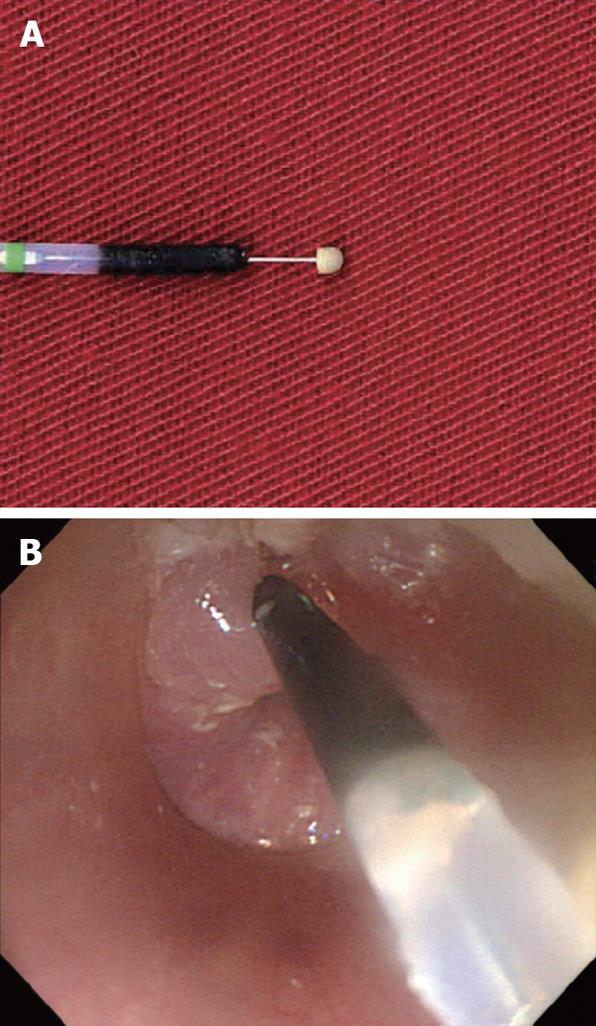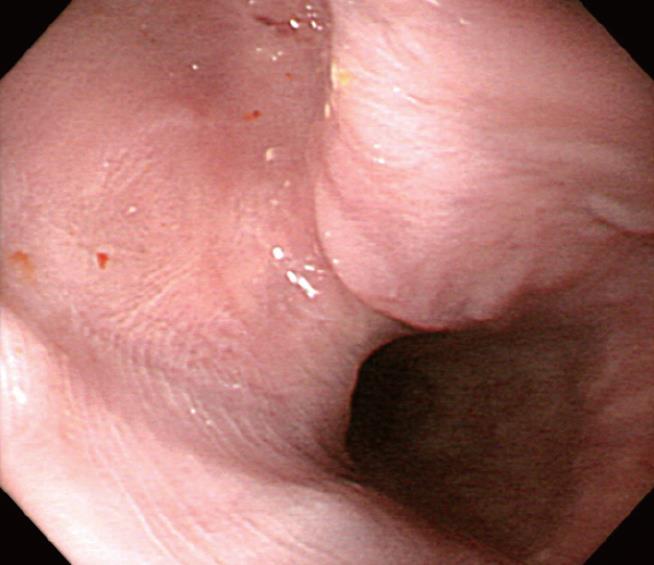Copyright
©2008 The WJG Press and Baishideng.
World J Gastroenterol. Nov 14, 2008; 14(42): 6589-6592
Published online Nov 14, 2008. doi: 10.3748/wjg.14.6589
Published online Nov 14, 2008. doi: 10.3748/wjg.14.6589
Figure 1 Barium swallow and endoscopic images.
A: An antero-posterior view of a barium swallow image, showing a diverticular sac filled with contrast and food debris in the left lateral side of the cervical esophagus; B: An endoscopic view of the KJD that originates on the anterolateral wall of the cervical esophagus, which was filled with impacted food debris (black arrow: the tissue bridge; white arrow: The esophageal lumen).
Figure 2 A fitted overtube.
A: A photograph of a fitted overtube. The distal end of a standard overtube is snipped off with a scissor in a rectangular form according to the size of the diverticular opening (arrow); B: An endoscopic view following insertion of a fitted overtube (white arrow: Tissue bridge; Black arrow: Overtube). The tissue bridge of the diverticulum is exposed in the fixed operational field. The surrounding esophageal wall is completely protected and stabilized.
Figure 3 Isolated-tip needle-knife papillotome.
A: A photograph of an isolated-tip needle-knife papillotome (Iso-tome). Note the semi-oval shaped, isolated-tip composed of epoxide adhesive. B: An endoscopic view during the diverticulotomy. The Iso-Tome is inserted into the diverticular sac before dissection.
Figure 4 An endoscopic view at three months after the diverticulotomy.
A wide communication between the diverticular sac and the esophageal lumen without a significant tissue bridge or retained food debris is shown.
- Citation: Lee CK, Chung IK, Park JY, Lee TH, Lee SH, Park SH, Kim HS, Kim SJ. Endoscopic diverticulotomy with an isolated-tip needle-knife papillotome (Iso-Tome) and a fitted overtube for the treatment of a Killian-Jamieson diverticulum. World J Gastroenterol 2008; 14(42): 6589-6592
- URL: https://www.wjgnet.com/1007-9327/full/v14/i42/6589.htm
- DOI: https://dx.doi.org/10.3748/wjg.14.6589












